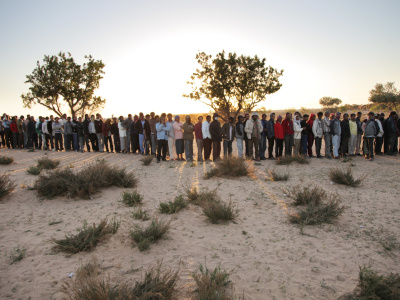Imagine a country divided into 24 regions, each with very different capabilities and prospects to succeed. How would you treat them in a fair and equitable way? This is the challenge that Tunisia’s 24 governorates, 264 districts, and numerous municipalities, face. Five years after the uprisings, regional inequalities are still fuelling social tensions. In January 2016, the death of 28-year-old unemployed Ridha Yahyaoui, who demonstrated for his right to work, started a new wave of protests, with the old demand of fairer politics and better social and economic opportunities. In 2016, the objectives of the revolution are still far from accomplished. Socio-economic indicators illustrate that political reforms still need to match the aspirations of the Tunisian democratic movement. Economic growth, at an average of 1.5% between 2011 and 2015, is sluggish. Unemployment has risen from 13% in 2010 to 15.3% in 2015 and two out of five young Tunisians are unemployed, according to the data from Tunisia’s National Institute of Statistics. In the deprived Centre-Western and Southern regions, these numbers are even higher, leaving a considerable part of the population feeling marginalised.
Empowering regions and the 2014 constitution
Despite all this, several political feats have taken place. Since 2011, a new Constitution founded a democratic and pluralistic system with new institutions. Free presidential and parliamentary elections were held and a new coalition government is now in charge, signalling the emergence of a civil state governed by law and the people. The 2014 Constitution calls for a greater balance between the country’s regions and states, empowering local authorities – tackling issues of local development which are critical for socio-economic development. Therefore, the principle of decentralisation is a core part of the new Constitution. Since 2014, a number of draft laws and reform projects tackling decentralisation have been proposed. However, they were faced by political resistance fuelled by divisions between the political parties in Parliament. Despite several attempts, the key proposed laws are yet to be adopted. A new target date of April 2016 has been set but it is also likely not to be met. This will inevitably delay the process of addressing some of the fundamental issues around spatial inequalities in Tunisia.
A territorial approach to local economic development and job creation
Tunisia’s poorest regions – which concentrate 70% of the extremely poor despite accommodating only 30%of the population – need a local economic development that creates jobs. In 2015 and January 2016, civil society, led by established players such as the UGTT, a trade union, the Union des Diplômés Chômeurs, and the human rights organisation Ligue Tunisienne des Droits de l’Homme (LTDH),
mobilised again to demand jobs and regional development, rejecting the centralised approach to the regions' problems. UGTT and LTDH were two of the four organisations to win the 2015 Nobel Peace Prize. Research shows that regional disparities in Tunisia are entrenched or even exacerbated by the current set of economic policies. The duality between the dynamic exporting offshore sector and the protected and stagnant onshore sector, for instance,
still allows deep-rooted dichotomies to persist. Recent attacks in the border town of Ben Guerdane show that the threat of extremism in the country also has a territorial dimension. In that context, local economic development is no longer simply a matter of poverty reduction, but a necessity to maintain Tunisia’s political stability and ensure the security of its population. A territorial approach to local development in Tunisia means going beyond the narrowly defined concept of (political) decentralisation and may provide a key to unlock some of the current blockages. It means viewing decentralisation as a means to an end rather than an end in itself. This will require a vision on the linkages between the different policies that can potentially address regional disparities. It also requires more flexibility in managing the different regions depending on their own social, political and economic dynamics. But for regional development to work, it needs to connect national reforms (including decentralisation, fiscal reform and transfers, etc.) with a bottom-up process that strengthens local agencies and builds trust between local authorities, citizens and existing private sector.
Interested in the North African region? Visit our dossier on the changing relations between Europe and North Africa. The views expressed here are those of the authors and not necessarily those of ECDPM.





